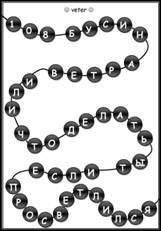Коллектив авторов - Африка. История и историки
«The People’s Paper» throws important new light on the relationship between the ANC and other organisations in the early decades afer 1912 and its infuence relative to them. It has of course long been known that in these decades the ANC’s fortunes rose and fell, and that the ANC was ofen eclipsed by other organisations, most notably the Industrial and Commercial Workers Union (ICU) in the 1920s, but too ofen it and these other organisations have been regarded as discrete and separate entities. In fact, members of the ANC were ofen involved with, and had important infuence on, such other organisations as the ICU and the Communist Party of South Africa (CPSA), so that no hard and fast lines can be drawn between the ANC and the other organisations with which its history was intimately intertwined. It has also long been known that the ANC, though predominantly moderate and quiescent in this period, also had radical moments, in the immediate afermath of the First World War and in the presidency of J. T. Gumede between 1927 and 1930[738]. While it may not, therefore, be entirely correct to write, as Tula Simpson does in his Introduction to the special issue of the «South African Historical Journal» on «Te ANC at 100», of «under-acknowledged levels of radicalism» in the movement before 1940s[739], the new work of Limb, Vinson and others has given us much new detail on those moments of radicalism. Tis work reveals ofen cross-cutting connections between those in favour of a more moderate approach and those who more clearly saw the connections between political and economic power and wished to challenge both. What can be said of the new work is that it has given us a richer and more complex picture of the early decades of the ANC, but there remains ample scope for scholars to use the «Abantu-Batho» anthology, along with other sources, to explore further both the relationship between the ANC and other organisations and the moments of radicalism in the early ANC.
2. The Middle decades: c. 1940–1961
Peter Walshe’s Oxford D. Phil thesis became the frst scholarly account of the history of the ANC to be published, as long ago as 1970[740]. While Walshe surveyed its history from its establishment to 1952, those scholars who began writing about the history of the ANC in the 1970s and the 1980s directed most of their attention to the organisation during the period from its revival in the early 1940s to its banning in 1960, using new sources that had become available by the time they wrote[741]. A key book on this period, though it also moved into the 1970s, was that by Gail Gerhart, a member of the United States-based Gwendolen Carter/Tom Karis team that did so much from the 1960s to save and collect together key documents relating to the history of the ANC. Gerhart focused in her monograph, on the Africanist strand in ANC politics from the Youth League in the 1940s to the breakaway by those who called themselves Africanists in 1958 and beyond[742]. A few years later Tom Lodge, then teaching at the University of the Witwatersrand, published his very infuential book on «Black Politics in South Africa since 1945», which included much on the ANC, at both the national and a local level, before, during and afer the Defance Campaign of 1952, showing that it had «much less internal coherence and much less bureaucratic symmetry than is implied in other preceding accounts»[743].
In recent years the most prolifc author on these middle years of the ANC has been the American missionary Scott Couper, author of the frst scholarly and detailed biography of Chief Albert Luthuli, President-General from 1952 to his death in 1967. Since publishing his biography, Couper has gone on to defend his arguments about Luthuli’s insistence on non-violence, arguments which he claims are soundly based on a reading of the relevant archives[744]. He has challenged, in my view efectively, what he calls a nationalist interpretation that suggests that Luthuli abandoned his commitment to non-violence in 1961, and was even responsible for giving the name Umkhonto we Sizwe (MK) to what became the ANC’s armed wing[745]. In this period of the ANC’s history, when and why some called for a turn to violence becomes a leading question, along with the role of the CPSA and its successor, the underground South African Communist Party (SACP). In an article published in the special issue of the «South African Historical Journal» on the ANC at 100, Irina Filatova shows that before the CPSA dissolved itself in the face of being suppressed in 1950, it had already had signifcant infuence on the ideology of the ANC[746]. Te revival in the CPSA in the early 1940s came before that in the ANC, and the ANC Youth League was in its early years strongly anti-communist. Sisulu and Mandela only gradually shifed their ideological positions. For the infuence of the SACP we can now turn to the work of Stephen Ellis of Leiden, who claims inter alia that Nelson Mandela was a member of the Central Committee of the SACP in 1960 and that it was the SACP that initiated the creation of MK. In the centenary year of the ANC Ellis has brought out a much revised version of his original co-authored «Comrades Against Apartheid», now entitled «External Mission: the ANC in Exile», in which he argues that the key decision to move to armed struggle was taken at a meeting in December 1960 at which Mandela was present. How important it was, however, that Mandela was then a member of the Central Committee of the SACP remains open to question, as does the role of the SACP in initiating the turn to violence, for as Ellis has himself shown there were many reasons for the change of course, which had more than one origin[747].
3. The Exile Decades: 1960–1990
How distinct were the decades of exile for the ANC? What was the ANC able to achieve in exile? To what extent was it under the infuence of the South African Communist Party (SACP) and what efect did that infuence, and others, have on the movement? In «External Mission: the ANC in Exile», Ellis admits to being infuenced by his disillusionment with recent developments in the ruling party, and he now repeats, even more strongly than before, the argument originally presented in «Comrades Against Apartheid» that the SACP efectively controlled the ANC in exile. He maintains that the ANC’s links with the Soviet Union were crucial in determining its actions in exile and had signifcant impact on the culture of the organisation, which underwent a very rapid transformation in the early 1960s from mass movement to «sect»[748]. Against this, and the earlier view of Vladimir Shubin that the impetus for the armed struggle came from within the ANC itself and not from the SACP or the Soviet Union[749], the American historian Paul Landau has, in a detailed examination of the evidence available in South Africa, painted a picture that, to use his own word, is much more «messy»[750]. Tese are issues that are bound to be explored again and again in the future.
In the early 1980s, in the afermath of the Soweto Uprising and the movement into exile of many who had been politicised by that event, the ANC was faced by a crisis in its camps in Angola, where its security department dealt very harshly with those whom it considered spies or enemy agents. Following Paul Trewhela, who pioneered the expose of what had happened in the ANC’s camps in Angola, Ellis puts major emphasis on the destructive role of the Stasi-trained ofcials in the ANC’s Securty Department and emphasises the scale and signifcance of the human rights abuses perpetrated in the camps. An alternative view has been presented by Luli Callinicos, the biographer of the then President-General of the ANC, who has come to Oliver Tambo’s defence in relation to the human rights abuses in the camps in a detailed article in the «South African Historical Journal». In her opinion, Ellis, and before him Trewhela, in challenging the ANC’s own master narrative, with its emphasis on the glory of the armed struggle, and stressing the atrocities committed in the camps, present what she calls a counter-narrative that, in her view, plays down the role of enemy agents in the camps and the context of the apartheid state’s Total Onslaught at the time. Tough she admits that the SACP infuenced the ANC, she points out that the ANC also infuenced the SACP and argues that Ellis’ picture of one-way control is wide of the mark. Landau supports her on this, writing of how «the ANC and MK controlled and contained the SACP, and for many years strategically silenced it altogether in Zambia»[751]. Tere is clearly scope for more work on, say, what Callinicos does not mention, the infuence of the spy scandal in SWAPO on the ANC, for SWAPO’s bases in Angola were close to those of the ANC and the ANC cannot have been ignorance of what SWAPO was doing in Lubango and elsewhere. For all the new insights opened up by Trewhela and now Ellis, they do not provide a balanced account of the exile years. In «External Mission», the great success of the ANC’s diplomatic campaign around the world is downplayed. Ellis has lef it to Hugh Macmillan, Tula Simpson and others to tell the detailed story of the ANC’s role in Zambia, Swaziland and other countries neighbouring South Africa in these decades[752], and from such work a more balanced view of the ANC’s exile years should emerge in the future[753].
Two other key issues of ongoing debate concerning the exile period must be mentioned: the efectiveness of the armed struggle and the extent to which the ANC was able to control events in South Africa itself. Some of the chapters in the relevant volumes of the South African Democracy Education Trust on the struggle in the 1970s and 1980s emphasise both the armed struggle and the links that the ANC had within the country. It is now generally accepted by historians, however, if not always by ANC spokespeople, that the armed struggle was never more than mere armed propaganda, and that the ANC did not instigate the Durban strikes of 1973, the Soweto Uprising in 1976 or the Township Revolt in 1984. In all three cases it was caught unawares by the new resistance in South Africa. Te question of the infuence of the ANC in exile on the United Democratic Front (UDF) within the country in the 1980s is more problematic, given the contacts between Allan Boesak and other leading fgures in the UDF and the ANC leadership in exile[754]. But what is clear is that the one-way infuence that, say, Govan Mbeki tried to draw[755] is not correct, and that the ANC had no efective infuence over much of the internal resistance that took place in South Africa in the 1980s[756]. As a reviewer of Ellis’ book writes: «Te few examples of genuine liberated zones such as Cradock were the product of grass-roots community activism and charismatic leaders such as Matthew Goniwe, with which the exiled ANC had poor links»[757].
4. The ANC since exile: 1990 to the present
Te most detailed study of the ANC’s years in power is now to be found in the book published in 2011 by Susan Booysen of Wits University, and as the centenary year drew to a close, she contributed a shorter version to the volume that Wits University Press published on «100 Years of the ANC»[758]. As she says herself, her book is «more of a reference book than a casual night time read»[759], and not being a historian, her study lacks the necessary chronology that a historical study would provide. Te way she jumps from one period to another is ofen disconcerting, while she is not able to rest her account on the kind of archival evidence that historians use for earlier decades in the history of the ANC[760]. She shows how the ANC had, post 1994, both to consolidate its power and adopt new methods to retain power, and suggests that, for all its adeptness at reinventing itself, the ANC is now in decline, though of course she does not enjoy the perspective to be certain of this. Why the ANC remains dominant in our political system, Booysen explains by pointing to the its liberation credentials, claiming that people are not yet ready to vote for another party, and explaining that in recent elections many eligible voters have abstained from voting. She investigates what she calls the «multiple faces» (Chapter 3) of the ANC’s power, including cadre deployment, the use of state institutions, foor-crossing (Chapter 7) and the presidency (especially Chapter 11). In a chapter entitled «ANC and State Power», she analyses the scramble for resources, summed up by the phrase «it is our turn to drink at the trough». She shows how it has become increasingly difcult to separate the ANC from the state, and how people in the ANC have increasingly used state institutions for their own political and personal purposes[761]. In 2012 Martin Plaut, the Africa editor at the BBC, and Paul Holden, who has done much to reveal the scandal of the Arms Deal[762], teamed up to write «Who Rules South Africa?», a much broader and more readable account than Booysen’s, and one which has the additional merit of being more directly focused than Booysen’s book on the ANC as part of the tripartite alliance, for they argue that power does not reside in Parliament or even the Cabinet, but with the alliance, a loose structure with no constitution linked to business and criminal elements[763].
5. What is needed…
While the new works produced during the centenary year have added to the now vast literature on the ANC[764], there remains much to be learnt. We can agree with Philip Bonner that «the 100 year history of the ANC represents both a treasure trove of extraordinary episodes, magnetic personalities and instructive moments, as well as a Pandora’s box out of which something uncomfortable or unsettling is always likely to emerge»[765]. Much of what emerged from within the ANC during the struggle was, hardly surprisingly, partisan, polemical and propagandistic, designed to help promote the ANC in that struggle, while since the advent of formal democracy some writing on the ANC has continued in the same vein, glorifying the ANC’s role, while others, disillusioned with the ANC, have instead emphasized negative aspects of the story[766]. What is needed now is a balanced look at the entire history of the ANC over the century, exploring continuities and discontinuities. Only one short attempt was made to do that during the centenary[767].
In his short history of the ANC, published over a decade ago in 2000, Saul Dubow expressed surprise «that no reliable, unpartisan and well researched general history of the ANC from its foundation to the present exists», and this remains the case[768]. Te very complexity of the relationship between the history of the ANC and that of the broader liberation movement may help explain in part why we still lack such a history. Te «brief history of the African National Congress» on the ANC’s own website does not focus throughout on the ANC as an organization, but includes, say, Black Consciousness, the Soweto uprising and the Township revolt of the mid 1980s, without explaining the relationship between other movements and events to the ANC.[769] For the ANC was not always the most important resistance movement against segregation and apartheid: it was eclipsed by ICU in the 1920s; the All African Convention from the mid-1930s; the newly formed Pan Africanist Congress (PAC) in late 1959/early 1960; the Black Consciousness Movement (BCM) in the 1970s; and the UDF in the 1980s. While, as we have noted, the UDF had links to the exiled ANC, neither the UDF nor the ANC was responsible for the bulk of the internal resistance of the 1980s[770]. Dubow warned against a teleological approach that saw the ANC as always in the vanguard of the struggle, and therefore necessarily the leading player in the transition to democracy[771]. Nor, within the Southern African region, was it always the most successful liberation movement. Its links to other liberation movements in the region remain largely unexplored. And its years in power, during which the fragmentation noticeable in its early years[772] increased, will require continuing analysis as the ANC’s position changes in the future.




